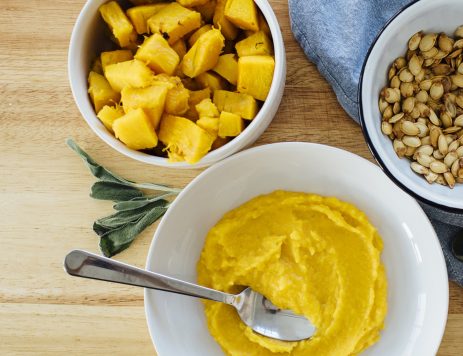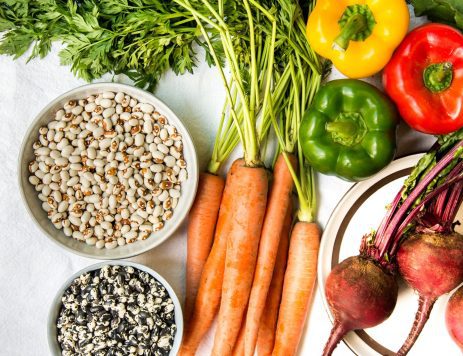How to Make a Vegetable Puree
Steps for Making a Vegetable Puree
- Wash, peel, and dice your vegetable of choice. Creating an even dice is important here. It will allow for even cooking—meaning no chunks of uncooked vegetables in your puree.
- Place all the diced vegetables in a steamer basket and cook until they’re soft enough to squish with one finger—and no further. Don’t cook veggies until they’re mealy or waterlogged.
- Place the cooked vegetables into a blender or food processor and add the butter and cream if using. Season with salt and pepper.
- Blend the puree to your desired texture. Try a spoonful to make sure it’s how you like it. Tip: Try blending a little bit and then lift the lid and let some steam escape. Hot steam can expand and cause the lid to come off while blending if you’re not careful.
- Remove the puree with a rubber spatula.
Tips on Making a Vegetable Puree
- Stick with one kind of vegetable to ensure even cooking and a smooth puree. If you want to use a combination of veggies, puree them separately and mix them together.
- If you don’t have a steamer basket, you can steam the vegetables in a covered pot with an inch of water at the bottom. You’ll need to strain the vegetables before they go in the blender.
- Try different seasonings like Cajun or your favorite herbs.
- Substitute the butter and cream with a nonfat or dairy-free alternative. You can opt for unsweetened nondairy milk or margarine or oil instead. You can even add sour cream in place of the cream for a different flavor. Adding some type of fat or milk helps make the puree creamy.
- Vegetables that are great to puree: sweet potatoes, carrots, beets, parsnips, and cauliflower.
- Vegetables to avoid pureeing:
- Fibrous green vegetables like broccoli, and veggies with a shell like peas—they tend to leave strings and pieces that won’t puree.
- Starchy vegetables like potatoes and some winter squash become gluey when put in a blender or food processor. Starchy vegetables like these should be hand-mashed or passed through a ricer.



